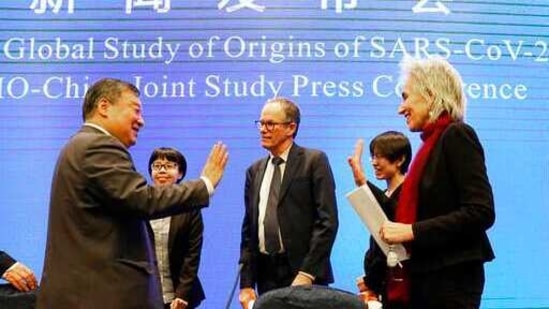WHO's Wuhan team identifies two ‘most likely' scenarios of Covid-19 transmission to humans
WHO expert Peter Ben Embarek told a press briefing that the team probed four hypotheses around the transmission of coronavirus to the human population.
A team of experts investigating the origin of novel coronavirus SARS-CoV-2 in Wuhan has identified two most likely scenarios that caused the transmission of the coronavirus disease (Covid-19) to the human population. World Health Organisation (WHO) expert Peter Ben Embarek on Tuesday told a press briefing that the team probed four hypotheses around the transmission of coronavirus to human population and narrowed down on two most likely scenarios, including the one involving intermediary host species.

"Our initial findings suggest that the introduction through an intermediary host species is the most likely pathway and one way that will require more studies and more specific targeted research," said Embarek.
During the initial days of Covid-19 outbreak, preliminary studies had suggested that the bats could be the source since the coronavirus present in bats has a genome that is 96 per cent identical to SARS-CoV-2. An intermediary host species has been considered the most likely pathway for such viruses because the bat coronavirus cannot bind to receptors in human lung cells.
Read | 'No indication of Covid-19 spread in Wuhan before Dec 2019': WHO team
Embarek, the head of the WHO-led team in Wuhan, also highlighted the possibility of transmission through the trade of frozen products. The WHO’s food safety scientist said that virus can survive in frozen environments but added that the possibility of cold chain transmission of coronavirus warrants further investigation.
"We know the virus can survive in conditions that are found in these cold, frozen environments, but we don't really understand if the virus can transmit to humans," he told the briefing that lasted nearly 170 minutes.
China has often pushed the hypothesis of cold chain transmission and repeatedly announced findings of coronavirus traces on imported food packaging. Embarek stressed that investigation into the second scenario would require a study to find out whether a frozen wild animal in a market setting could spread the virus under right conditions.
The WHO expert said that the third hypothesis of direct transmission from an animal reservoir to a human, also known as “direct zoonotic spillover”, is a possible pathway and generating “recommendation for future studies.” He dismissed the possibility of the laboratory-related incident as the least likely scenario. "Findings suggest that the laboratory hypothesis is extremely unlikely to explain the introduction of the virus to the human population," he added.



